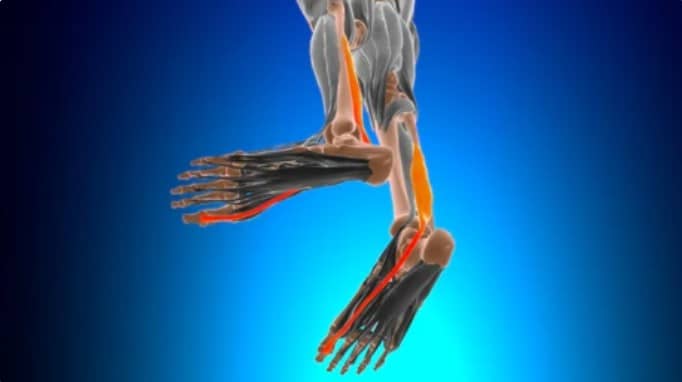
FHL Tendinopathy
What is this condition? What causes this condition?
The Flexor Hallucis Longus (FHL) is a muscle that lies deep within the calf muscle, and acts to flex the big toe and aids in plantarflexion of the ankle joint. The term tendinopathy refers to a condition of a tendon where an individual presents with symptoms of pain and swelling usually after a period of increased workload (Abat et al., 2017).
FHL tendinopathies are commonly the result of repetitive use of an individual’s ankles and feet in hyperflexion and hyperextension in a forced manner. This is commonly seen in ballet dancers where irritation of the tendon can occur during repeated push-off with the foot and toes (Lughi, 2020).
Common symptoms / signs
The most common signs and symptoms individuals experience with FHL tendinopathy include a dull ache that turns into sharp pain when pushing off to walk, run or jump. The location of pain can differ along different areas of the tendon, including the back or inside of the ankle, underneath the base of the big toe, or underneath the arch of the foot. Swelling can also be present, as well as pain with movement of the big toe (Michelson & Dunn, 2005).
Risk factors of this condition?
- Athletes – swimmers, runners, gymnasts etc
- Change in training load
- Poor ankle/foot control
- Fatigue
- Poor fitting shoes
(Sammarco & Cooper, 1998)
How is it treated?
Treatment for FHL tendinopathy begins with activity modification and load management to minimise pain levels and begin the rehabilitation process. Training activities may need to be temporarily modified or the number of training sessions may need to be reduced to keep pain levels down. Research has found that exercise therapy is one of the most effective resources for the treatment of lower limb tendinopathies (dos Santos Franco et al., 2019).
Like other tendinopathies, an FHL tendinopathy can be treated similarly. Four stages of rehabilitation including isometric, isotonic, energy-storing loading, and return to sport can be applied to an FHL tendinopathy to allow for recovery (Malliaras et al., 2015).
References
Abat, F., Alfredson, H., Cucchiarini, M., Madry, H., Marmotti, A., Mouton, C., Oliveira, J. M., Pereira, H., Peretti, G. M., Romero-Rodriguez, D., Spang, C., Stephen, J., van Bergen, C. J. A., & de Girolamo, L. (2017). Current trends in tendinopathy: consensus of the ESSKA basic science committee. Part I: biology, biomechanics, anatomy and an exercise-based approach. Journal of Experimental Orthopaedics, 4(1). https://doi.org/10.1186/s40634-017-0092-6
dos Santos Franco, Y. R., Miyamoto, G. C., Franco, K. F. M., de Oliveira, R. R., & Cabral, C. M. N. (2019). Exercise therapy in the treatment of tendinopathies of the lower limbs: a protocol of a systematic review. Systematic Reviews, 8(1). https://doi.org/10.1186/s13643-019-1058-9
Lughi, M. (2020). Flexor Hallucis Longus Tendinopathy. Ankle Joint Arthroscopy, 201–205. https://doi.org/10.1007/978-3-030-29231-7_27
Malliaras, P., Cook, J., Purdam, C., & Rio, E. (2015). Patellar Tendinopathy: Clinical Diagnosis, Load Management, and Advice for Challenging Case Presentations. Journal of Orthopaedic & Sports Physical Therapy, 45(11), 887–898. https://doi.org/10.2519/jospt.2015.5987
Michelson, J., & Dunn, L. (2005). Tenosynovitis of the flexor hallucis longus: a clinical study of the spectrum of presentation and treatment. Foot & Ankle International, 26(4), 291–303. https://doi.org/10.1177/107110070502600405
Sammarco, G. J., & Cooper, P. S. (1998). Flexor Hallucis Longus Tendon Injury in Dancers and Nondancers. Foot & Ankle International, 19(6), 356–362. https://doi.org/10.1177/107110079801900603
